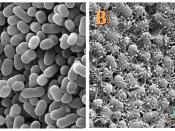In society today the subject of food safety is a growing concern among consumers. One reason is the emergence of new types of harmful bacteria or evolving forms of old ones that cause disease. Food Irradiation is a great new process that can eliminate disease- causing microorganisms such as E.coli O157:H7, Campylobacter, and Salmonella in foods. The process if irradiating food involves exposing food to carefully controlled amounts of ionizing radiation for a specific time to achieve desired results. When food is irradiated the nutritional value is unchanged and the food does not become radioactive. Similar technology is used to sterilize medical devices so they can be used in surgery or implanted without risk of infection. Overwhelming scientific evidence demonstrates that irradiation does not harm the nutritional value of food and does not make the food unsafe to eat. These studies show that Food Irradiation is safe.
The Food and Drug Administration approved irradiation of meat products for controlling disease-causing micro-organisms on December 3, 1997.
The approval applies to fresh and frozen red meats such as beef, lamb and pork. USDA approved irradiation in December 1999. "Irradiation of meat could prove to be another important tool to protect consumers from food-borne disease," said Michael A. Friedman, M.D., Lead Deputy FDA Commissioner. The CDC has stated, "Food irradiation is a promising new application of an established technology." They agree it holds great potential for preventing many important food borne diseases that are transmitted through meat, poultry, fresh produce and other foods. Just like the pasteurization of milk, irradiation has to be linked to careful sanitation programs. Consumer confidence will depend on making food clean first, and then using irradiation or pasteurization to make it safe. "Food irradiation is a logical next step to reducing the burden of food borne disease in...



Well written and well informed
I like the structure of your essay. It provides alot of information able how the food irradiation works.
0 out of 0 people found this comment useful.